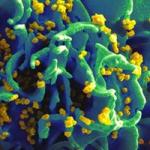
Brandon Harvey, Ph.D.
Investigator
Integrative Neuroscience Branch, Molecular Mechanisms of Cellular Stress and Inflammation
NIDA
Research Topics
Dr. Harvey received his Ph.D. in Neurobiology and Anatomy from the University of Rochester where he began his interest in the cellular mechanisms of neuronal dysfunction. He worked on gene delivery and gene therapy in models of central nervous system diseases. He joined NIDA in 2002 where he brought methods for viral vector production to the NIDA IRP. Dr. Harvey’s research uses viral vectors to study the molecular and cellular processes associated with substance abuse using rodent models of drug toxicity and neurodegeneration. His laboratory recently discovered a cellular phenomenon termed “exodosis” which occurs when resident proteins within a cell’s endoplasmic reticulum are secreted in response to calcium depletion. His research program studies pathophysiological consequences of exodosis and ER stress triggered by substances of abuse and other neurological diseases. Through a collaboration with the National Center for Advancing Translational Sciences, a high throughput screen has identified novel and FDA-approved drugs capable of alleviating ER stress and exodosis to potentially treat human diseases. Lastly, Dr. Harvey’s group is developing blood-based biomarkers to monitor exodosis and ER stress in human disease.
Selected Publications
- Trychta KA, Bäck S, Henderson MJ, Harvey BK. KDEL Receptors Are Differentially Regulated to Maintain the ER Proteome under Calcium Deficiency. Cell Rep. 2018;25(7):1829-1840.e6.
- Henderson MJ, Trychta KA, Yang SM, Bäck S, Yasgar A, Wires ES, Danchik C, Yan X, Yano H, Shi L, Wu KJ, Wang AQ, Tao D, Zahoránszky-Kőhalmi G, Hu X, Xu X, Maloney D, Zakharov AV, Rai G, Urano F, Airavaara M, Gavrilova O, Jadhav A, Wang Y, Simeonov A, Harvey BK. A target-agnostic screen identifies approved drugs to stabilize the endoplasmic reticulum-resident proteome. Cell Rep. 2021;35(4):109040.
- Bäck S, Necarsulmer J, Whitaker LR, Coke LM, Koivula P, Heathward EJ, Fortuno LV, Zhang Y, Yeh CG, Baldwin HA, Spencer MD, Mejias-Aponte CA, Pickel J, Hoffman AF, Spivak CE, Lupica CR, Underhill SM, Amara SG, Domanskyi A, Anttila JE, Airavaara M, Hope BT, Hamra FK, Richie CT, Harvey BK. Neuron-Specific Genome Modification in the Adult Rat Brain Using CRISPR-Cas9 Transgenic Rats. Neuron. 2019;102(1):105-119.e8.
- Wires ES, Trychta KA, Bäck S, Sulima A, Rice KC, Harvey BK. High fat diet disrupts endoplasmic reticulum calcium homeostasis in the rat liver. J Hepatol. 2017;67(5):1009-1017.
- Dossat AM, Trychta KA, Glotfelty EJ, Hinkle JJ, Fortuno LV, Gore LN, Richie CT, Harvey BK. Excitotoxic glutamate levels cause the secretion of resident endoplasmic reticulum proteins. J Neurochem. 2024;168(9):2461-2478.
Related Scientific Focus Areas





Molecular Biology and Biochemistry
View additional Principal Investigators in Molecular Biology and Biochemistry
This page was last updated on Friday, August 29, 2025